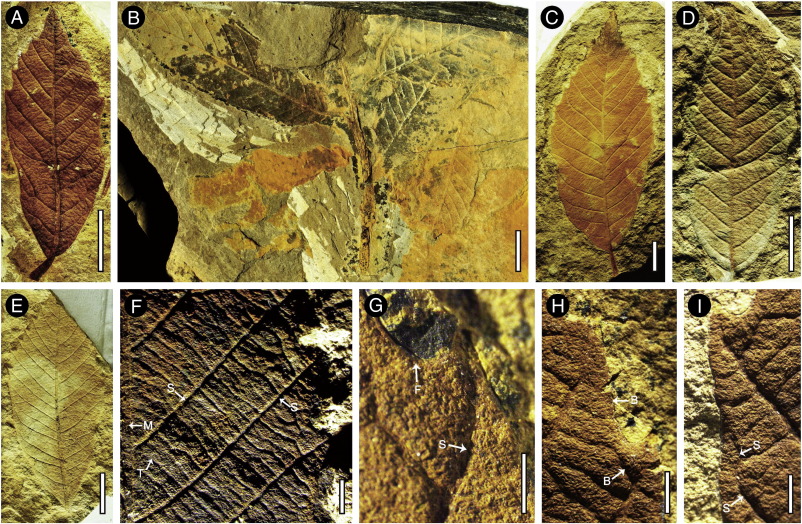Ring-cupped oaks belong to Quercus subgenus Cyclobalanopsis (Fagaceae) and are often found in tropical and subtropical regions of southeast and east Asia. Fossil leaves, acorns, cupules and wood of Q. subgenus Cyclobalanopsis are reported from Japan and China as early as the Eocene, but no fossils of ring-cupped oaks have previously been found in Tibet.
Prof. ZHOU Zhekun and his team of Xishuangbanna Tropical Botanical Garden (XTBG) found many leaf fossils of ring-cupped oaks in late Miocene strata of Mangkang County, eastern Tibet at 3910 meters above sea level, where no extant ring-cupped oaks survive today. Based on gross characters such as equally spaced secondary veins and a single serrate tooth per secondary vein along the laminar margin, the researchers assigned the leaf fossils to Fagaceae. Through detailed morphological comparisons with extant and fossil species, the researchers described the fossils as a new species, Q. tibetensis H. Xu, T. Su et Z.K. Zhou sp. nov.
Q. tibetensis was the first fossil record of Quercus subgenus Cyclobalanopsis in Tibet, which indicated that ring-cupped oaks existed during the late Miocene in the core area of the Qinghai–Tibetan Plateau. The researchers used climate requirements of nearest relatives of Q.tibetensis to explore its paleoclimate implications. They found that the climate conditions in southeastern Qinghai–Tibetan Plateau during the late Miocene were likely warmer and more humid than they are today. They also found that there was significant elevation difference between the fossil site and modern distributions of Cyclobalanopsis
The finding of the first fossil record of ring-cupped oaks in Tibet provided further evidence about the paleoenvironmental change that has taken place in Tibet since the late Miocene.
The study entitled “The first fossil record of ring-cupped oak (Quercus L.subgenusCyclobalanopsis (Oersted) Schneider) in Tibet and its paleoenvironmental implications” has been published in Palaeogeography, Palaeoclimatology, Palaeoecology.
Contact
ZHOU Zhekun, Ph.D Principal Investigator
Key Laboratory of Tropical Forest Ecology, Xishuangbanna Tropical Botanical Garden, Chinese Academy of Sciences, Mengla, Yunnan 666303, China
Tel: 86-871-65109223
E-mail: zhouzk@xtbg.ac.cn 
Quercus tibetensis H. Xu, T. Su et Z.K. Zhou sp. nov. from the late Miocene of Tibet, China. (Image by XU He) |

